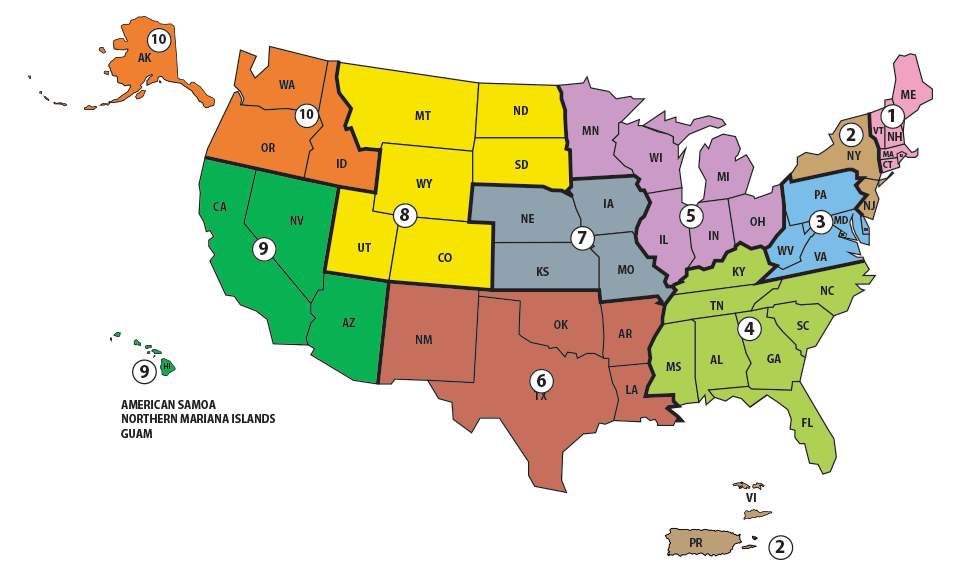Trash Free Waters Projects by Region
Across the country, EPA has provided technical and financial support for a number of projects designed to prevent trash from entering waterways. Click the links below to learn more about Trash-Free Waters projects in the U.S.
For information about EPA's international marine litter reduction efforts, see International Cooperation page.

- Region 1 – Connecticut, Maine, Massachusetts, New Hampshire, Rhode Island, Vermont and 10 Tribal Nations
- Region 2 – New Jersey, New York, Puerto Rico, US Virgin Islands and eight Indian Nations
- Region 3 – Delaware, District of Columbia, Maryland, Pennsylvania, Virginia, West Virginia and Region 3 Tribal lands
- Region 4 – Alabama, Florida, Georgia, Kentucky, Mississippi, North Carolina, South Carolina, Tennessee and 6 Tribes
- Region 5 – Illinois, Indiana, Michigan, Minnesota, Ohio, Wisconsin and 35 Tribes
- Region 6 – Arkansas, Louisiana, New Mexico, Oklahoma, Texas and 66 Tribal Nations
- Region 7 - Iowa, Kansas, Missouri, Nebraska and Nine Tribal Nations
- Region 8 – Colorado, Montana, North Dakota, South Dakota, Utah, Wyoming and 28 Tribal Nations
- Region 9 - Arizona, California, Hawaii, Nevada, Pacific Islands and 148 Tribes
- Region 10 – Alaska, Idaho, Oregon, Washington, and 271 Tribal Nations
Region 1
Region 2
- Puerto Rico Strategic Plan to Reduce Aquatic Debris
- Hydration Refill Stations in New York and New Jersey State Parks
- The “Don’t Trash Long Island Sound” Campaign
- Bronx River Alliance’s Project WASTE
- Long Island Product Stewardship Institute Restaurant Guide
Region 3
- Maryland Coastal Bays “Protect Our Sand and Seas” Campaign
- Supporting the Development of a National Approach to Extracting Microplastics from Sediment
Region 4
- Proctor Creek Trash Removal and Prevention
- A Comprehensive Strategy for Creating TFW in Three Mile Creek (Mobile Bay)
- South Atlantic Strategy for Trash Free Waters
Region 5
- Information on projects in Region 5 will be added here
Region 6
- The Trash Free Texas Adopt-A-Spot Tool
- Greater Houston and Galveston Bay Annual "River, Lakes, Bays 'N Bayous Trash Bash”
Region 7
Region 8
Region 9
- San Francisco Bay Area Trash Capture Demonstration Project
- Hayward Youth-Based Trash Capture, Reduction, and Watershed Education Project
- Santa Monica Bay National Estuary Program’s ReThink Disposable Pilot Project
- Reducing Food Service Plastics on University of California Campuses
- Coyote Creek Trash Reduction Project: Clean Creeks, Healthy Communities
- ReThink Disposable: Packaging Waste Source Reduction Restaurant Program
